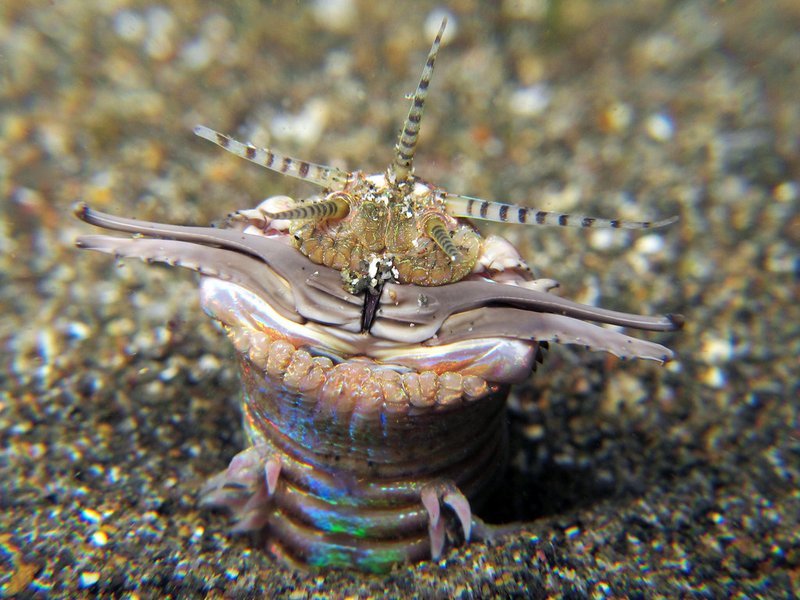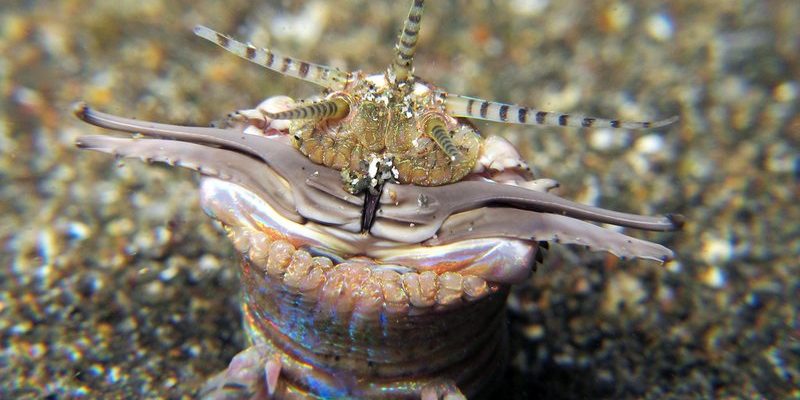
When you’re setting up your aquarium, the goal is to create a space that feels natural and balanced. You might be tempted to use certain materials or decorations that could inadvertently create a cozy home for a bobbit worm. These worms are sneaky, hiding in the sand or rocks, waiting for the perfect moment to strike. But don’t worry—by making informed choices during your aquascaping process, you can avoid their habitat creation and keep your aquatic pets safe.
Understanding Bobbit Worms
Bobbit worms, or *Eunice aphroditois*, are fascinating but potentially destructive creatures in the aquarium world. These worms can grow quite long—up to three feet in some cases—and are known for their swift and aggressive predation. They love to burrow in the substrate, often hiding just below the surface. You might not even know they’re there until it’s too late, which makes understanding them crucial for any aquarist.
Here’s the thing: bobbit worms can be introduced to your tank in several ways. They often come in with live rock, coral, or substrates that you might purchase for your aquarium. Once they’re in, they can multiply quickly if conditions are right. If you’ve ever found a half-eaten fish in your tank and wondered what happened, a bobbit worm could be the culprit.
To prevent bobbit worms, it’s essential to know where they thrive. They prefer sandy substrates and dark crevices, where they can easily hide from predators. This means your aquascaping choices really matter. By being aware of their habits and habitats, you can make smarter decisions that keep them at bay.
Choosing Safe Substrates
Selecting the right substrate is one of the most vital steps in aquascaping. If you’re thinking about using standard sand or fine gravel, you might want to reconsider. Bobbit worms love these types of substrates because they can easily burrow and hide. Instead, consider heavier substrates like larger gravel or specialized aquarium soil that makes it harder for them to dig in.
Another option is to use **inert substrates**, which don’t provide nutrients for plants and are less appealing to bobbit worms. These substrates make it challenging for worms to establish themselves, giving you a better chance at keeping your aquarium free from these intruders. Just remember that your plants still need a good foundation, so look for a balance between aesthetics and practicality.
While you’re at it, make sure to **rinse your substrate thoroughly** before adding it to the tank. This can help remove any potential hitchhikers, including bobbit worm larvae. Even if you’re buying from a reputable source, it doesn’t hurt to double-check.
Aquascaping Layout Considerations
Now that you’ve got your substrate sorted, let’s talk about the layout of your aquascape. Think of it as arranging furniture in a room; you want it to be both functional and inviting. To avoid creating crevices where bobbit worms might thrive, go for open spaces instead of tight spots.
When arranging rocks and decorations, avoid stacking them too high or creating dark corners. Instead, lean towards flatter layouts that discourage worms from finding nooks to hide in. You might even consider using **ceramic decorations** that are less likely to harbor unwanted guests.
Also, play around with your plant selection. Fast-growing plants can help take up nutrients and space, making it harder for bobbit worms to establish themselves. Plus, they add beauty and balance to your aquascape.
Regular Maintenance Is Key
Keeping your aquarium clean is crucial for preventing not just bobbit worms, but all kinds of unwanted pests. Honestly, you wouldn’t let food scraps fester in your kitchen, right? The same logic applies here. Regular maintenance helps you catch any early signs of a worm infestation and prevents those sneaky critters from becoming a bigger problem.
Aim to perform **weekly water changes** and clean your substrate as needed. Vacuuming the substrate can help remove waste and any potential eggs or larvae lying in wait. You might also want to invest in a high-quality filter to keep the water clean and healthy, which indirectly helps control the worm population too.
Speaking of maintenance, check your decorations and plants regularly. Give them a gentle rinse to remove any algae or organic material that could attract pests. The cleaner your aquarium, the less likely it is to become a bobbit worm haven.
Choosing the Right Livestock
If you’re just starting your aquascaping journey, think carefully about the fish and other creatures you’ll introduce into your tank. Some fish species are known to prey on bobbit worms and can help keep their numbers in check. For instance, certain triggers and wrasses might take an interest in hunting them down.
However, keep in mind that introducing new livestock isn’t just about pest control; it requires compatibility with the rest of your tank. You don’t want to add fish that will harm your beautiful plants or stress out your existing pets. Research any species you’re considering and aim for a balanced ecosystem where everyone can thrive.
You might also want to consider a quarantine tank for new arrivals. This way, you can monitor any new fish for signs of parasites or other pests, including bobbit worms, before introducing them to your main setup.
Final Thoughts on Aquascaping to Avoid Bobbit Worms
In the world of aquascaping, it’s all about creating a harmonious environment for both plants and animals. By being mindful of the potential for bobbit worms, you can take proactive steps to avoid their habitat creation. Choosing the right substrate, maintaining a clean tank, and picking the right fishes are all part of the process.
Remember, it’s not just about aesthetics; it’s about fostering a healthy and safe home for your aquatic life. With a bit of planning and regular upkeep, you can enjoy your aquascape without the fear of bobbit worms lurking beneath the surface. Happy aquascaping!

